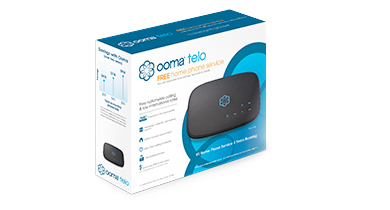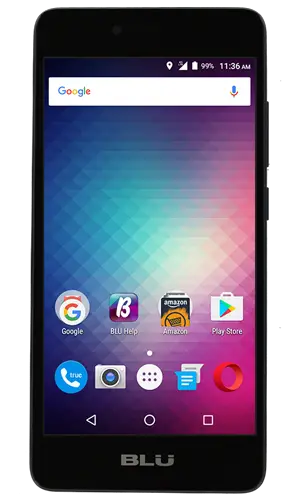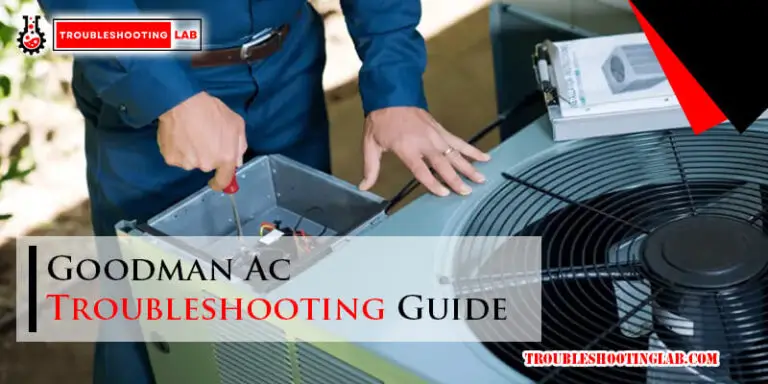Ooma Troubleshooting: Quick Fixes for Common Issues
Ooma troubleshooting typically involves checking your internet connection and power supply. Ensure your Ooma device is properly plugged in and connected to the network.Experiencing issues with your Ooma device can be frustrating, but resolving them doesn’t have to be complicated. Most problems are easily fixable with a few quick checks and adjustments. Whether you’re dealing with connectivity issues, call quality problems, or setup difficulties, a step-by-step approach will often lead you to a solution.
It’s important to start with the basics, like confirming that your device has power and your internet service is active and stable. Understanding common troubleshooting steps can save you time and help you get your Ooma system back on track swiftly. With the right guidance, even those less familiar with tech can effectively troubleshoot their Ooma phone system.
Introduction To Ooma Troubleshooting
Welcome to the world of Ooma troubleshooting. Ooma devices offer reliable VoIP services. Sometimes, users may face issues. Knowing how to fix these problems is important. This section will guide you through common issues and solutions.
Common Issues With Ooma Devices
Ooma users might encounter several problems. These can include:
- Connection issues
- Poor call quality
- Device setup difficulties
- Voicemail malfunctions
Identifying these issues is the first step. Next, we apply quick fixes.
Benefits Of Quick Diy Solutions
DIY solutions save time and money. They empower users to handle problems without waiting for support. Quick fixes improve your experience with Ooma devices.

Credit: support.ooma.com
Identifying Your Ooma Device Model
Having trouble with your Ooma device? You’re not alone. First, let’s figure out which model you have. Knowing your Ooma device model is like having a map when you’re lost. It guides you to the right solution, making troubleshooting a breeze.
Where To Find Model Information
Finding your Ooma device model is easy. Follow these steps:
- Check the device: Look at the bottom or back of your Ooma device. A label there lists the model number.
- Use Ooma Account: Log into your Ooma account online. Go to the “Device” section. Your model details will be there.
- Original Packaging: If you kept the box, great! Model info is on the packaging.
Why Model Identification Is Key To Troubleshooting
Why is knowing your model so important? Here’s why:
- Different features: Each Ooma model has unique features. Knowing your model helps you use these features right.
- Specific solutions: Troubleshooting guides vary by model. The right model means finding the right fix.
- Software updates: Updates can differ between models. Knowing yours ensures you get the correct updates.
Identifying your Ooma device model is the first step to solving any issue. With the right model information, you can find specific fixes and get the most out of your device.
No Dial Tone: Resolving Connectivity Hiccups
Encountering a ‘no dial tone’ issue on your Ooma device can be frustrating. This guide aims to help you resolve connectivity hiccups quickly and effectively. By following simple troubleshooting steps, you can restore your phone service in no time.
Checking The Physical Connections
First, inspect all cables connected to your Ooma device. Ensure each cord is firmly plugged in. Loose or disconnected wires often cause no dial tone problems.
- Power cable: Confirm it’s securely connected to the Ooma unit and outlet.
- Phone cord: Check the connection between your phone and the Ooma device.
- Internet cable: Verify the link from your Ooma to the router is intact.
If cables are undamaged and properly connected, move to the next step.
Restarting Your Ooma Device
Rebooting your Ooma can resolve many technical issues. Here’s a quick way to restart:
- Disconnect the power cord from the back of your Ooma device.
- Wait for about one minute.
- Reconnect the power cord to your Ooma device.
Wait for the device to power up. The lights should turn blue if it’s working.

Credit: www.pingplotter.com
Echo Or Poor Call Quality
Echo or poor call quality can frustrate users during phone conversations. These issues disrupt communication and reduce the clarity of calls. Ooma users might experience this sometimes. The following sections provide solutions to improve call quality.
Adjusting Audio Settings
Audio settings play a vital role in call quality. Ooma devices come with adjustable audio levels. Users should check these settings. If the volume is too high, it can cause echo.
- Access the Ooma dashboard.
- Navigate to the ‘Preferences’ section.
- Click on ‘Audio’ settings.
- Adjust the speaker and microphone levels.
Examining Internet Speed And Quality
Internet quality affects call performance. Poor internet leads to bad call quality. Users should check their internet speed and stability.
| Action | Tool | Result |
|---|---|---|
| Test speed | Online speed test | Check if it meets Ooma’s requirements |
| Check stability | Router settings | Ensure stable connection |
- Use an ethernet cable for a stable connection.
- Restart router to refresh connection.
- Close unnecessary online activities during calls.
Device Setup Issues
Setting up your Ooma device can sometimes be tricky. Device setup issues can stop you from enjoying smooth communication. Don’t worry! We have easy solutions for you. Follow these steps to fix common setup problems.
Step-by-step Initial Setup
First, let’s start with setting up your Ooma device correctly. Follow these steps:
- Unbox your Ooma device carefully.
- Connect the device to your internet router using the provided cable.
- Power up your device with the adapter.
- Wait for the light on your device to turn blue.
- Activate your device online by visiting the Ooma setup website.
Done right, your device should be ready to use!
Troubleshooting Common Setup Errors
Sometimes, things don’t go as planned. Here are fixes for common errors:
- Light not turning blue? Check your internet connection.
- Can’t connect to the website? Try a different browser.
- Device not activating? Ensure you entered the correct activation code.
Remember, patience is key. Try these steps and give your device a few moments to respond. If issues persist, contact Ooma support for help.
Ooma Mobile App Glitches
Experiencing issues with the Ooma Mobile App can be frustrating. This section will guide you through common glitches and their fixes. Streamline your Ooma experience with these troubleshooting tips.
Reinstalling The App
Reinstalling the Ooma Mobile App often resolves glitches. Follow these steps:
- Uninstall the current app.
- Restart your smartphone.
- Download the latest Ooma Mobile App version.
- Install the app and log in with your credentials.
Ensuring Compatibility With Your Smartphone
For optimal performance, ensure your smartphone meets the app’s requirements:
- Check the app’s compatibility on the store page.
- Update your smartphone’s operating system if needed.
- Clear excess data or cache that might hinder the app’s functionality.
Managing Firmware Updates
Keeping Ooma devices up-to-date ensures top performance and security. Firmware updates can bring new features and fix known issues. Users should regularly check and update their firmware to maintain a reliable home or business communication system.
How To Check For Firmware Updates
Ooma devices typically update automatically. Users can verify their firmware status with these steps:
- Access the Ooma device interface via a web browser.
- Log in with your account credentials.
- Navigate to the ‘Device Settings’ section.
- Locate the ‘System Information’ or ‘Status’ area.
- Check the ‘Firmware Version’ displayed.
If the device shows an outdated version, users can prompt a manual update.
What To Do If Updates Fail
Update failures can occur. Follow these steps for a solution:
- Restart the Ooma device.
- Ensure a stable internet connection.
- Attempt a manual update through the interface.
- Contact Ooma support if issues persist.
Ooma’s support team can guide users through additional troubleshooting.
Ooma Telo Light Indicators
Understanding your Ooma Telo’s lights is key to troubleshooting. These indicators can tell you a lot about your device’s status. Below, learn how each light pattern helps you identify and fix issues quickly.
Decoding Light Patterns
Ooma Telo devices have lights that change colors and patterns. These signals show different device states. A solid blue light means all is good. Other colors and patterns indicate attention needed.
Actions For Specific Light Indicators
Here’s what to do for common light signals:
- Flashing Red: Check your internet connection.
- Solid Red: Reboot the device.
- Flashing Orange: Upgrade in progress. Wait for it.
- Flashing Blue and Red: Contact support. Possible hardware issue.
See the table below for more details:
| Light Color | Status | Action Needed |
|---|---|---|
| Blue | Working properly | None |
| Red | Device offline | Check power and internet |
| Orange | Connecting to Ooma service | Wait or check connection |
| Purple | Handset registration mode | Register handset |
Always ensure your Ooma Telo is in a cool, ventilated space. Keep it away from other electronic devices. This prevents overheating and signal interference.
Network And Router Configuration For Ooma
Getting your Ooma system up and running involves critical network and router configurations. These settings ensure stable and clear phone calls. They allow your device to communicate effectively with your home network. Here’s how to optimize your router settings and set up Quality of Service (QoS) for the best Ooma experience.
Optimizing Router Settings For Ooma
Router compatibility is key for Ooma. Check the Ooma website for compatible models. Update your router firmware. This keeps your network secure. It helps your Ooma device work well.
Adjust the router’s DHCP settings. Ensure Ooma gets a dynamic IP address. This lets it connect to the internet smoothly.
Open necessary ports in your router. Ooma uses specific ports for calls. The Ooma manual lists these ports.
Setting Up Quality Of Service (qos)
QoS is vital. It prioritizes Ooma traffic on your network. This prevents call drops and quality issues. Log into your router. Find the QoS settings. Enter the Ooma device’s IP address. Set its priority to high.
Control bandwidth allocation. Assign more to Ooma during calls. This ensures clear audio.
Test your settings. Make a call with Ooma. Check for stability and clarity. Adjust if necessary.
Remember, a stable Ooma setup provides reliable service. Proper network and router configuration make this possible.

Credit: m.youtube.com
Advanced Troubleshooting Techniques
Having trouble with your Ooma device? You’re in the right place. Our Advanced Troubleshooting Techniques guide will help. We’ll dive into how to access advanced settings. Also, we’ll tell you when it’s time to call Ooma Support.
Accessing Ooma’s Advanced Settings
To tweak your Ooma setup, accessing the advanced settings is key. Here’s how:
- Open your web browser.
- Type in the Ooma device IP address.
- Log in using your Ooma account details.
- Navigate to the Advanced section.
This area lets you adjust network settings, manage your devices, and more. Make small changes and test if they solve your issue.
When To Contact Ooma Support
Sometimes, problems need expert help. Here are signs you should contact Ooma Support:
- Continuous service interruptions.
- Device not connecting to the internet.
- Strange noises during calls.
- Failed attempts at resetting your device.
Keep your account information ready. This will make the support process faster. Ooma’s team is ready to get your service back to normal.
Conclusion: Ensuring Reliable Ooma Service
Keeping your Ooma device in top condition is essential. Effective troubleshooting ensures smooth service. Let’s recap helpful tips and discuss long-term maintenance.
Recap Of Troubleshooting Tips
- Check your internet: Confirm if your connection is active.
- Restart your device: Power cycle the Ooma unit to resolve common issues.
- Inspect cables: Ensure all wires are secure and undamaged.
- Firmware updates: Keep your device’s software current.
- Factory reset: Use this as a last resort to fix persistent problems.
Maintaining Your Ooma Device Long-term
Maintain your Ooma device with regular check-ups. Here’s how:
- Monitor performance: Regularly test call quality and speed.
- Clean regularly: Dust off your device to prevent overheating.
- Update regularly: Install updates as soon as they’re available.
- Support access: Reach out to Ooma support for help when needed.
- User community: Join forums for tips from other Ooma users.
With these steps, your Ooma service will run reliably for years.
Frequently Asked Questions
How To Reset Ooma Telo Base Station?
To reset your Ooma Telo base station, press and hold the reset button on the device for 20 seconds until the lights start flashing, then release.
Why Is My Ooma Phone Not Working?
If your Ooma phone isn’t working, check your internet connection, ensure the Telo base station is powered on, and verify that all cables are securely connected.
Can Ooma Work With Any Internet Router?
Yes, Ooma is compatible with most internet routers, but ensure your router’s settings allow VoIP calls to connect without issues.
How To Fix Ooma Blue Light Flashing?
A flashing blue light on Ooma indicates it’s trying to connect. Reboot the Telo base station and router, or check for service outages in your area.
What Does A Solid Red Light On Ooma Mean?
A solid red light on your Ooma Telo typically signifies a system issue. Reboot the device, and if the problem persists, contact Ooma support for assistance.
Conclusion
Navigating Ooma issues doesn’t have to be daunting. With the right steps and understanding, you can quickly return to seamless communication. Remember, patience and careful troubleshooting are key. For more detailed guides and support, always refer to Ooma’s official resources.
Keep this guide handy, and happy calling!






